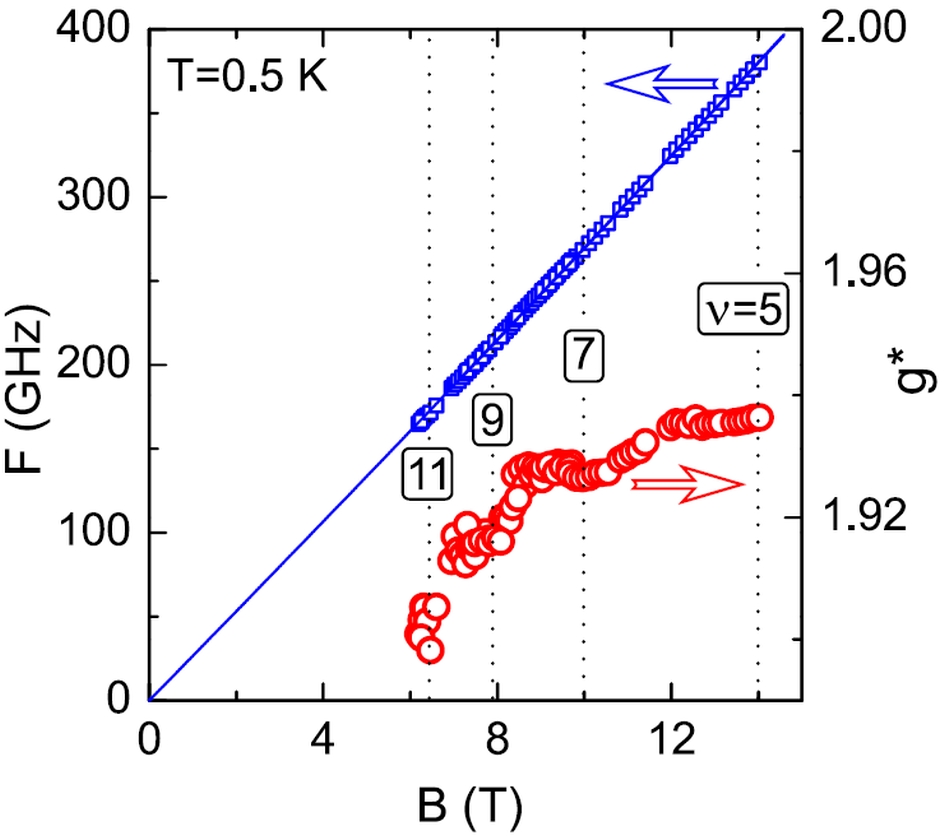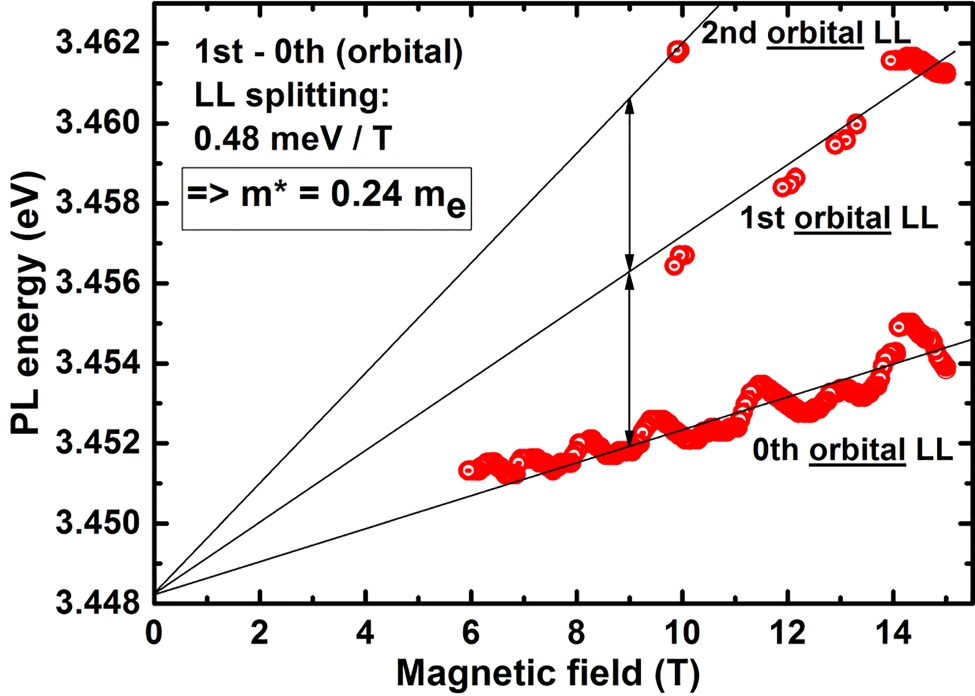During the past years ultra-pure GaN/AlGaN heterostructures with atomically-smooth interfaces and surfaces were grown by molecular beam epitaxy (MBE). The resulting layer stacks are a test ground for novel electrical and optical device concepts as well as fundamental material investigations. As a first example for fundamental material investigations, low-temperature photoluminescence (PL) spectra of ultra-pure GaN grown on dislocation-lean GaN substrates exhibit record-breaking narrow excitonic line widths and indicate the absence of unintentional impurity incorporation, except oxygen at an irreducible level of 2 x 1016 cm-3 (Fig. 1). Such pure GaN material is a perfect reference to understand PL signatures of intentionally incorporated elements (dopants), which helped to reveal the absence of any spectroscopic features associated with the potential p-type dopant carbon for decades.

Special effort was dedicated to heterostructures hosting 2-dimensional electron gases (2DEGs) at AlGaN/GaN interfaces. These 2DEGs are not only a prerequisite for the operation of lateral field-effect transistors, but also possess unique properties such as a high electron effective mass and a large g-factor. These allow to probe quantum properties in a previously inaccessible regime in mesoscopic physics. For the first time, microwave (mw) absorption could be detected within the quantum Hall regime of a 2DEG confined in a GaN/AlGaN heterostructure. The mw frequency is directly linked to the magnetic field, where the resistance change appears. In principal such a device could be used as a frequency-sensitive mw detector. On the other hand, by knowing the mw frequency these experiments allow for an accurate determination of the electron g-factor. The value for this fundamental material parameter was determined to be close to the free-electron value of 2 (Fig. 2).

Another fundamental material property is the effective electron mass. In a perpendicular magnetic field the 2D density of states splits into Landau levels, which separation is proportional to the effective mass. This modified density of states is the origin of Shubnikov-de Haas oscillations in the longitudinal resistance as well as the quantization of the Hall voltage (quantum Hall effect). Here and also for the first time, Landau level splitting in MBE-grown GaN/AlGaN heterostructures was observed optically. The reconstructed Landau level fan finally allows for a direct verification of the effective electron mass value of 0.24me (Fig. 3).

Cooperation:
Max-Planck-Institute for Chemical Physics of Solids Dresden (Germany), Russian Academy of Sciences, Moscow (Russia), TU Dresden (IHM) (Germany), RWTH Aachen (Germany)

